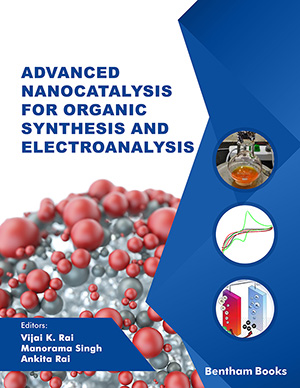
Abstract
Background: Determination of diagnostically significant components of biological materials using enzyme-free microscopic sensors is an urgent scientific task, which is being worked on by a significant number of scientific groups in the world. This is due to the fact that microscopic sensor-active tracks on inert surfaces can be obtained without preliminary manufacturing of precision templates.
Methods: Laser Induced Chemical Liquid Phase Deposition (LCLD) is a laser technology that allows the deposition of microsized conductive tracks from aqueous solutions of transition metal compounds at the focus of a laser beam. These tracks can be formed by one or two metals at the same time. The possibility of obtaining complexes in solution in which two different metals interact with one common coordination sphere of the ligand is of particular interest. The structure of such complexes is still insufficiently studied.
Results: The present study supplements the missing information on tartaric acid complexes, which can simultaneously coordinate two metals, for example, copper, nickel, silver, iron, and cobalt. Heterophase LCLD demonstrates high sensory activity in the electrochemical oxidation/reduction of glucose and hydrogen peroxide. Bimetallic deposits can be obtained in two ways. The first method consists of successive precipitation from a solution containing an ion of one metal, then another on top of the first. The second way is to create a solution in which two metals and one ligand are simultaneously present. Laser deposition is carried out in one stage. In practice, the possibility of the second method is not always realized.
Conclusion: In the present work, the basic principles of the formation of heterophase bimetallic sensor-sensitive porous material with a highly developed surface under the action of laser radiation have been analyzed, and new reference data have been accumulated on the structure of tartrate complexes containing two metals.
Keywords: Bimetallic tartrate complexes, microbiosensors materials, metals, electrochemical oxidation/reduction, LCLD, laser radiation
[http://dx.doi.org/10.1016/j.matlet.2021.130973]
[http://dx.doi.org/10.1149/1.2428700]
[http://dx.doi.org/10.1007/s10008-003-0441-5]
[http://dx.doi.org/10.1016/j.electacta.2005.03.060]
[http://dx.doi.org/10.1016/0036-9748(89)90296-2]
[http://dx.doi.org/10.1002/celc.201300214]
[http://dx.doi.org/10.1016/j.matlet.2010.10.088]
[http://dx.doi.org/10.1021/jp027269k]
[http://dx.doi.org/10.1016/j.apcatb.2016.07.004]
[http://dx.doi.org/10.1007/s10562-017-2179-1]
[http://dx.doi.org/10.1016/j.snb.2014.09.019]
[http://dx.doi.org/10.1016/j.snb.2015.02.003]
[http://dx.doi.org/10.1016/j.bios.2016.02.070] [PMID: 26967913]
[http://dx.doi.org/10.3390/nano6010005] [PMID: 28344262]
[http://dx.doi.org/10.1016/j.ab.2017.01.005] [PMID: 28082216]
[http://dx.doi.org/10.1016/j.snb.2016.06.173]
[http://dx.doi.org/10.1016/j.bios.2006.04.029] [PMID: 16781864]
[http://dx.doi.org/10.1016/S0013-4686(98)00103-0]
[http://dx.doi.org/10.1016/j.trac.2012.09.011]
(b) Timberlake CF. Iron–tartrate complexes. J Chem Soc 1964; 1964: 1229-40.
[http://dx.doi.org/10.1039/JR9640001229]
[http://dx.doi.org/10.1021/ja01216a002] [PMID: 20282381]
[http://dx.doi.org/10.1007/s10870-009-9600-6]
[http://dx.doi.org/10.1016/j.ccr.2008.10.015]
[http://dx.doi.org/10.1002/0470011149]
[http://dx.doi.org/10.1016/S0013-4686(02)00434-6]
[http://dx.doi.org/10.1016/j.ijhydene.2013.12.013]
[http://dx.doi.org/10.1016/0254-0584(86)90045-3]
 21
21 2
2

























